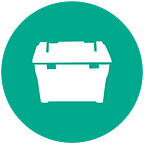‘Haitians to help Haitians’ priority as ShelterBox plans aid to help
Haiti is counting the human and physical cost of Hurricane Matthew — nearly 900 have been killed, tens of thousands homeless, cholera taking grip. These disaster prone communities are resilient, and a team from ShelterBox finds a new ‘self help’ ethos as it makes its partnership aid plans.
‘My house wasn’t destroyed, so I am receiving people, like it’s a temporary shelter.’ These are the words of Bellony Amazan in the town of Cavaillon, where around a dozen people died as hurricane Matthew tore across Haiti’s southern peninsula on Tuesday. She went on to say she did not yet have any food to give people.
Bellony’s community spirit in extreme circumstances reflects a fundamental change from reactions to previous storms and the massive quake in 2010. ShelterBox’s in-country coordinator Andrew Clark says,
‘Everyone is stressing a need and desire for ‘Haitians to help Haitians’ as best as they can. In the past there has been a reliance on aid organizations and a lack of local self-recovery.’
Although international assistance will be essential, and an official state of emergency has been declared, there is an increased emphasis on harnessing community groups and faith-based organizations.
Canadian SRT Andre Bloemink, adds,
‘Haitians are helping Haitians as best as they can. With previous operations the response often inadvertently promoted reliance on others as opposed to self-recovery. With an already challenged infrastructure, public health and uncertain political situation, the idea is to assist locals as best as we can to support a proactive recovery in the weeks and months ahead.’
As in the 2010 quake when it supported 28,000 families, and in other hurricane events such as Sandy in 2012, ShelterBox has been a major aid provider to Haiti, the poorest country in the Western hemisphere.
Food, clean water, healthcare and shelter remain priorities on Haiti in the aftermath of Matthew. Transport difficulties to affected areas have been eased a little by the construction of a temporary replacement bridge across La Digue river to the southwest of Port-au-Prince. ShelterBox team members are exploring transport links and logistics, but aid access to many remote communities is still mainly by sea or military helicopter, and some coastal towns and villages are still underwater four days after the storm surge.
In 2010 cholera, previously unknown in Haiti, claimed at least 3,500 lives. The Pan American Health Organization (PAHO) now says, ‘Due to massive flooding and its impact on water and sanitation infrastructure, cholera cases are expected to surge after Hurricane Matthew and through the normal rainy season until the start of 2017.’ Among ShelterBox’s suite of aid is a water filtration device to give a household safe drinking water, as well as mosquito nets to combat the spread of other diseases.
MATTHEW’S TRAIL OF DESTRUCTION
Originating off Africa on September 22, Matthew developed into a strong tropical storm on September 28. Meteorologists then reported an ‘explosive intensification’ as it tracked across the Caribbean, becoming a maximum strength Category 5 hurricane last weekend at a record-low latitude. On October 4, Matthew made landfall on Haiti’s Tiburon Peninsula as Category 4, and later on the eastern tip of Cuba. In Haiti an estimated 65,000 people sought the safety of resilient shelters. There were deaths even in the Dominican Republic, which shared the island of Hispaniola with Haiti. The hurricane continued to the Bahamas, and between October 7 and 8 gradually weakened to parallel the coast of the south-eastern United States.
NOTE TO EDITORS:
- ShelterBox can arrange interviews with team members in Haiti, communications allowing. Please email support@shelterboxcanada.org or call 647–352–1930
